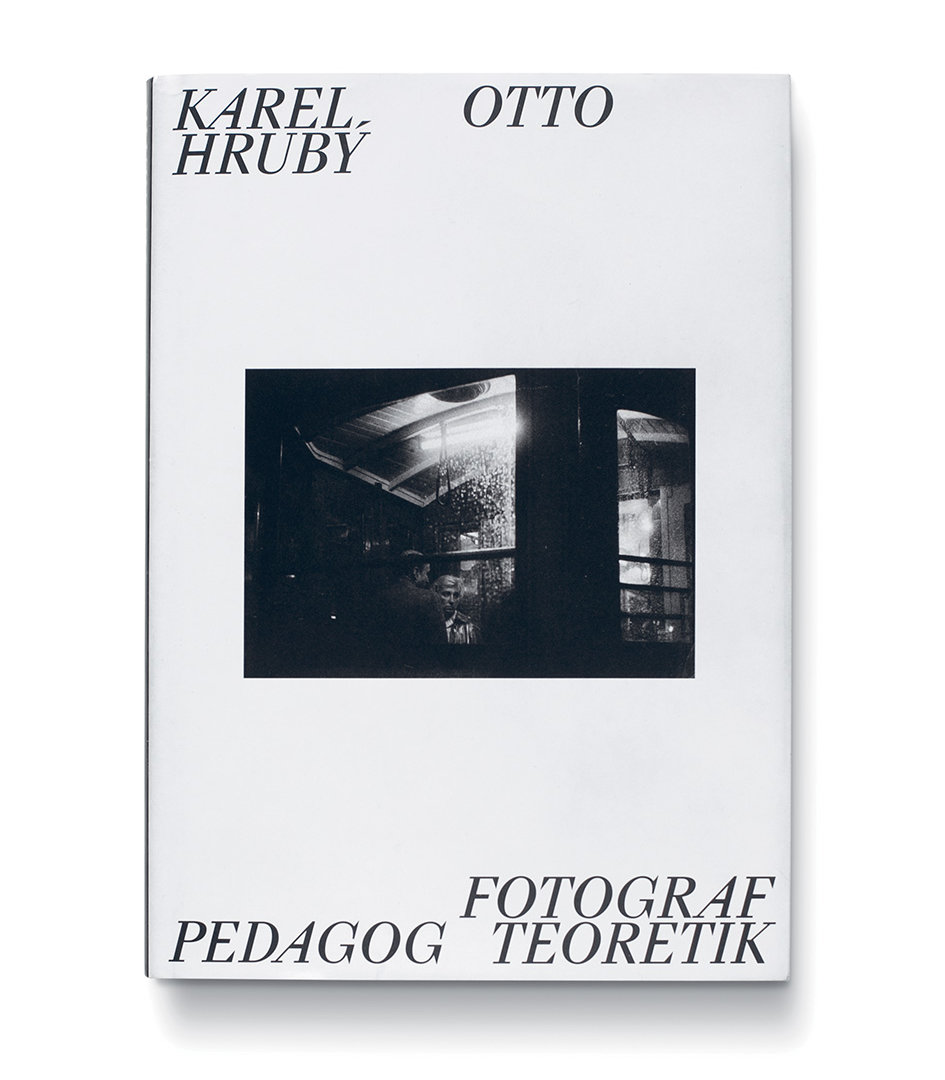Karel Otto Hrubý: Photographer, Educator, Theorist
The book Karel Otto Hrubý: Fotograf, pedagog, teoretik (Photographer,
Educator, Theorist), published to accompany the carefuly conceived
retrospective exhibition of the same name at the Brno House of Arts (5
December 2017 – 4 March 2018), presents a comprehensive profile of the
Brno photographer, educator, critic, promoter of photography, jazz man and
painter. The work on the monograph and the exhibition was not easy. The
authors went through all the material from Hrubý’s he estate, processed
thousands of negatives in the archives, and studied the life and work of the
photographer from many perspectives – perspectives that were not to be
and are not just objective descriptions. The authors also took on the much
needed reconstruction of the story of the Czechoslovak society in the second
half of the 20th century, stuck in the reality of communism. Like many of his
contemporaries, Hrubý was a member of the Czechoslovak Communist Party.
The retrospective exhibition showed that his authoritative character could
be seen mainly in Hrubý’s professional teaching activities at the Secondary
School of Applied Arts in Brno and in his activities as a journalist, critic and
photographer (awarded by the Excellence FIAP in Paris) in the Union of Fine
Artists and in the amateur Union of Czech Photographers.
The authors of the exhibition, Jana Vránová, Antonín Dufek and Lukáš
Bartl divided Hrubý’s work into cross-cutting series such as Beginnings, New
Future, Folklore and Traditions, Everyday Life, Landscape and Staged Reality,
and developed them in the publication, putting them into a relevant deeper
context. The core text by Antonín Dufek defines a wide range of contexts
of photographs by K. O. Hrubý, reflecting the everyday reality of the period
between the 1950s and 1980s. In his beginnings, Hrubý was inspired by
the interwar avant-garde and the poetics of everyday life. In the parallel of the
photographic profile of Hrubý and generally the Brno photographic background
(including other prominent figures like Jan Beran, Miloš Budík, Bohuslav Burian
and Vilém Reichmann), Dufek also examines the situation of the Czechoslovak
photography in the international context, comparing the documentary and
social photography in the USA and in Western and Eastern Europe. Lukáš
Bártl focused on the analytical plane of Hrubý’s photographs. In his pictures,
especially those from the 1950s, we can read subliminal references and
depressing subtexts in contrast with the contemporary social and political
situation. In the 1960s, Hrubý started to be more interested in documenting
the mundane, everyday life and landscape, using expressive and artistic
photography. Jiří Pátek’s monograph focused on Hrubý as a photographercritic
and theorist. Although Hrubý was a leftist, his texts were free of servility to
the Bolshevik practices, unlike the texts written by František Doležal, František
Čihák, or Lubomír Linhart. Hrubý’s main privilege was the critique of exhibitions
in Československá fotografie magazine. His texts about Brno photography
in the national context were essential. The most important mission of Hrubý
in his role of an educator is mentioned in the text by Miroslav Myška, and the
comprehensive view of Hrubý’s professional work is provided found in the
biographical summary by Roman A. Muselík. With its exceptionally high quality
and precise processing, the publication is a highly valuable document about
Czechoslovak photography, and thanks to its graphic concept, it stands out from
the usual production of photographic monographs.
Pavlína Vogelová
Hrubý, Karel Otto, Lukáš Bártl, Antonín Dufek, Roman Muselík, Miroslav Myška, Jiří Pátek, and Jana Vránová. Karel Otto Hrubý: Fotograf, pedagog, teoretik. Brno: Barrister & Principal Publishing, 2017. ISBN 978-80-7485-148-3.
#31 Body
Archive
- #45 hypertension
- #44 empathy
- #43 collecting
- #42 food
- #41 postdigital photography
- #40 earthlings
- #39 delight, pain
- #38 death, when you think about it
- #37 uneven ground
- #36 new utopias
- #35 living with humans
- #34 archaeology of euphoria
- #33 investigation
- #32 Non-work
- #31 Body
- #30 Eye In The Sky
- #29 Contemplation
- #28 Cultura / Natura
- #27 Cars
- #26 Documentary Strategies
- #25 Popular Music
- #24 Seeing Is Believing
- #23 Artificial Worlds
- #22 Image and Text
- #21 On Photography
- #20 Public Art
- #19 Film
- #18 80'
- #17 Amateur Photography
- #16 Photography and Painting
- #15 Prague
- #14 Commerce
- #13 Family
- #12 Reconstruction
- #11 Performance
- #10 Eroticon
- #9 Architecture
- #8 Landscape
- #7 New Staged Photography
- #6 The Recycle Image
- #5 Borders Of Documentary
- #4 Intimacy
- #3 Transforming Of Symbol
- #2 Collective Authorship
- #1 Face

